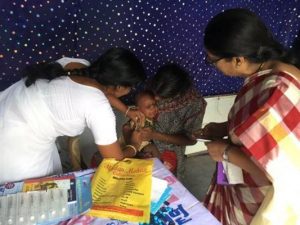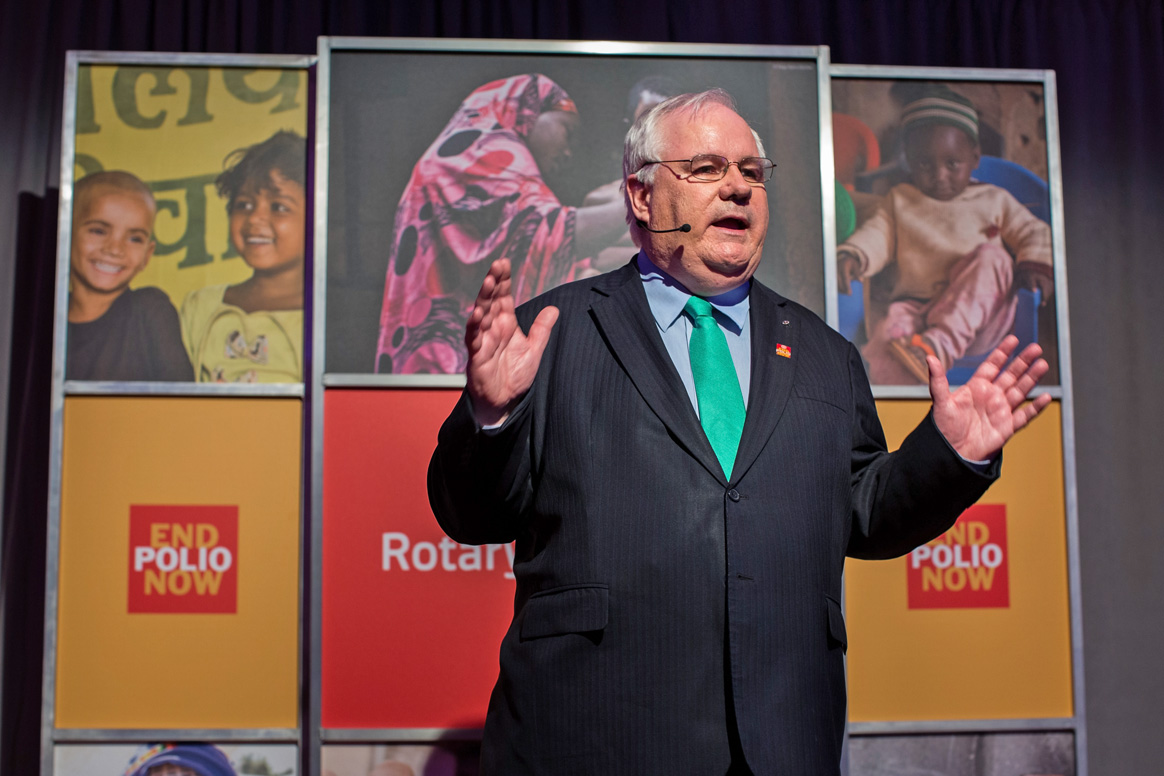
This campaign took place in response to an environmental sample of vaccine-derived poliovirus type 2 (VDPV2) collected on 16 May 2016. This was a newly emerged strain of the virus, and no case of paralysis was found in connection with it. Although no cases of paralysis have been found, a campaign was held in order to prevent the potential spread of VDPV2 resulting in paralyzing children.
“We launched an emergency response following the detection of this VDPV sample in Hyderabad using fractional dose IPV”, explained Mr C. K. Mishra from the Department of Health and Family Welfare, Government of India. “The government has taken this very seriously. The Union Minister of Health and Family Welfare took stock of the situation and extended full support to the state government. Staying polio-free is a top priority in India.”
An impressive operational plan was put in place for the campaign. Trained vaccinators were mobilized from neighbouring districts to meet the demand. The vaccine was distributed from fixed sites and uptake was high, thanks to media campaigns to alert parents of the importance of vaccinating their children. WHO India, the National Polio Surveillance Programme and UNICEF provided support and monitoring.
“The government of Telangana state swung into action immediately on hearing about the VDPV event”, said Mr Rajeshwar Tiwari, Department of Health and Family Welfare, Government of Telangana state. “We mobilized staff, vaccines, syringes and logistics. Together with WHO, UNICEF, Rotary International and other partner agencies, we successfully covered 312,000 children in this fractional dose IPV campaign. We extend our appreciation to our Auxiliary Nurse Midwives, especially those that joined the campaign from surrounding areas, who ensured that the vaccines were delivered safely and securely.”
Vaccine innovations: using fractional dose IPV
While IPV is typically given as an intramuscular injection, research has shown that it can also be given intradermally, between layers of the skin. Research by the partners of the GPEI has shown that 1/5th of a dose of IPV delivered in this way is both safe and immunogenic, generating nearly as much immunity as one full dose delivered into the muscle.
This new approach to administering IPV could be used both for vaccination campaigns during outbreak response and during routine immunization. A recent pilot campaign in Pakistan gathered data on the use of fractional dose IPV in campaigns, enabling the GPEI partners to recommend its use for outbreak and event response. In advance of the campaign in India, a half day training session was held to ensure vaccinators were aware of how to administer the dose intradermally to adapt to this new strategy. Nigeria, which is approaching two years since its last case of wild poliovirus, is also considering using fractional dose IPV in campaigns.
Fractional IPV can be given through routine immunization, as well as through campaigns. Based on data from clinical trials, the Government of India decided to introduce fractional dose IPV into the routine immunization programmes of eight states in the country. In addition, Sri Lanka will roll out fractional dose IPV through routine immunization programmes across the entire country, and other countries may follow.
India’s vaccine derived poliovirus sample
No child has been paralysed in India by this detected VDPV strain. It was detected in the sewage system only and the country continues to be polio-free. All countries in the WHO South East Asia Region continue to maintain high levels of alert for polioviruses. As part of this, environmental surveillance – testing sewage samples for polio – is being conducted regularly from 30 sites across seven states in India.
On very rare occasions, vaccine-derived polio viruses (VDPVs) are isolated from sewage samples. Prompt and adequate response to VDPVs detected in the sewage samples in the past has prevented any spread of these viruses in the community. Detection of such rare VDPVs is not unusual or unexpected, and robust short- and long-term management strategies are in place to adequately manage the small risks associated with such isolates.
Read the statement from WHO South East Asia Region on the VDPV2 sample.



